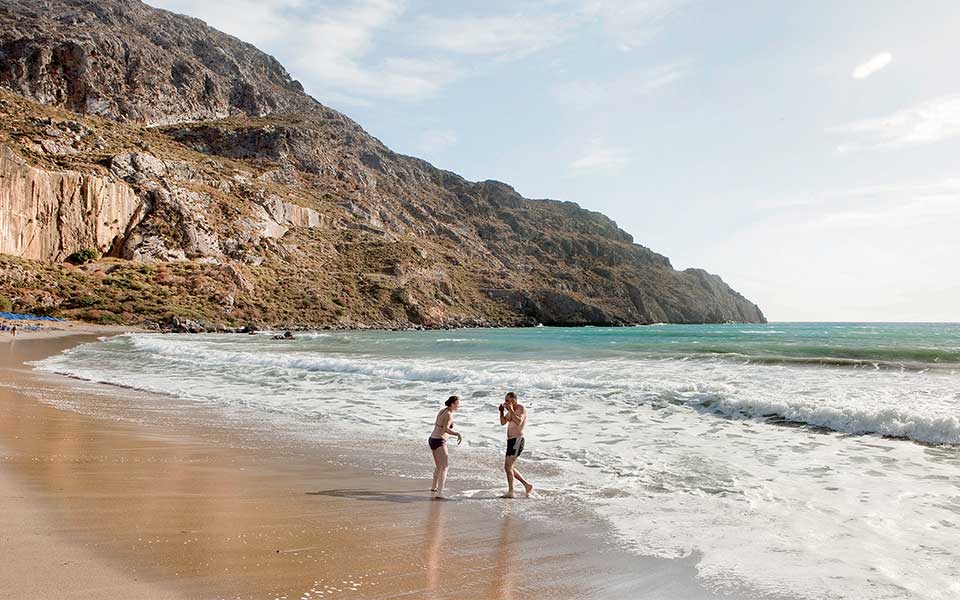The region of Rethymno (Ρέθυμνο) is, to a large extent, unknown to most travelers. It is perhaps for this reason that it has been so successful in preserving its gentle beauty and long-held traditions.
As they leave the charming cobblestone streets of its artsy Venetian capital, travelers have a choice between a handful of roads heading south into the hinterland. These routes run first through hills that grow into the soaring slopes of Mt Psiloritis before diving down through winding gorges to the exotic and less-frequented sandy beaches of the coast washed by the Libyan Sea.
Incredible sights and sites abound in this landscape steeped in history, where Minoan ruins, Byzantine churches, and rich traces of Crete’s Venetian and Ottoman occupations are everywhere.
Plakias
Hit the waves
This cheerful coastal village with a few resorts is pleasant enough, but it’s the coast to its east that is the real draw. The beaches of Damnoni, Ammoudi and Schinaria are simply gorgeous. With shallow azure waters, shingle and sand, this is beach serenity with just the right amount of comfort; all the beaches have sunbeds and tavernas nearby. Damnoni’s unique selling point is top-of-the-range water sports, including canoeing, diving, windsurfing and yachting, offered by the excellent Hapimag resort (Tel. (+30) 28320.300.00).
Info
A small passenger boat (Plakias Finikas Cruises, Tel. (+30) 693.680.6635) runs between local beaches three times a day. Damnoni pick-up for Preveli (see right) at 10:40, 12:40 and 14:00.
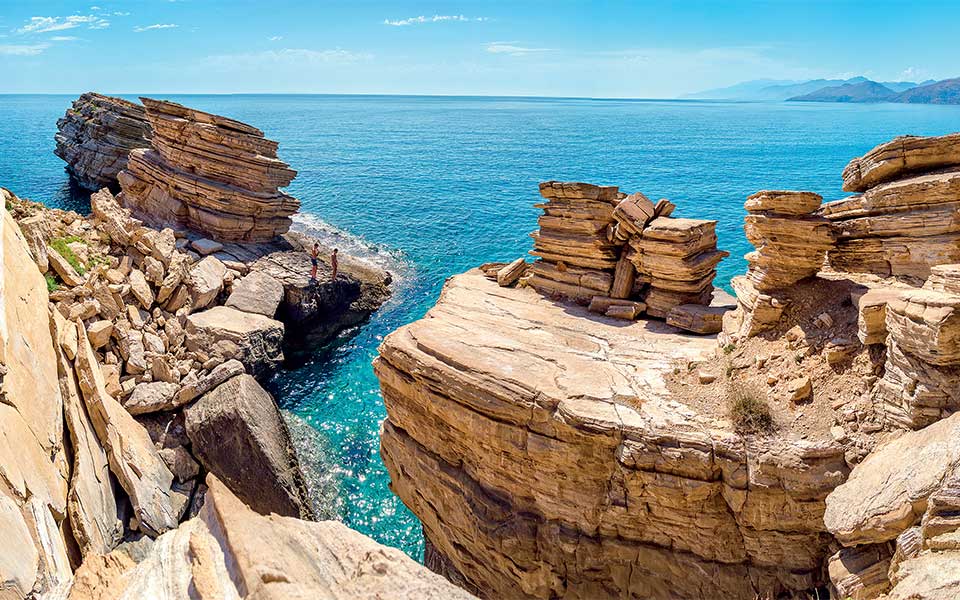
© Shutterstock
South coast
Unspoiled beauty
To get to some of Rethymno’s most outstanding beaches, head south to Spili, then take a right for Mourné. The seaside hamlets of Aghia Fotini, Triopetra and Aghios Pavlos, largely untouched by development and without a resort in sight, are on the other side of the mountain to the south. Take a map (better than Google when signal strength fails) and follow the signs (which are few and far between). Triopetra is the best pick with a handful of tavernas. Aghios Pavlos has become known as a spot for yoga lovers who want to get into their lotus positions in a picture-perfect paradise.

© Dimitris Vlaikos
MARGARITES
A Village made of clay
The ceramic ornaments that adorn the walls of its houses give this village its own special look. Of particular note among its 20 active ceramics workshops, each with a unique style, are Keramion, which offers seminars for those who want to try their hand at pottery, and EA Ceramics, with its utilitarian and ornamental wares which, despite their contemporary aesthetics, are all inspired by Minoan vases.
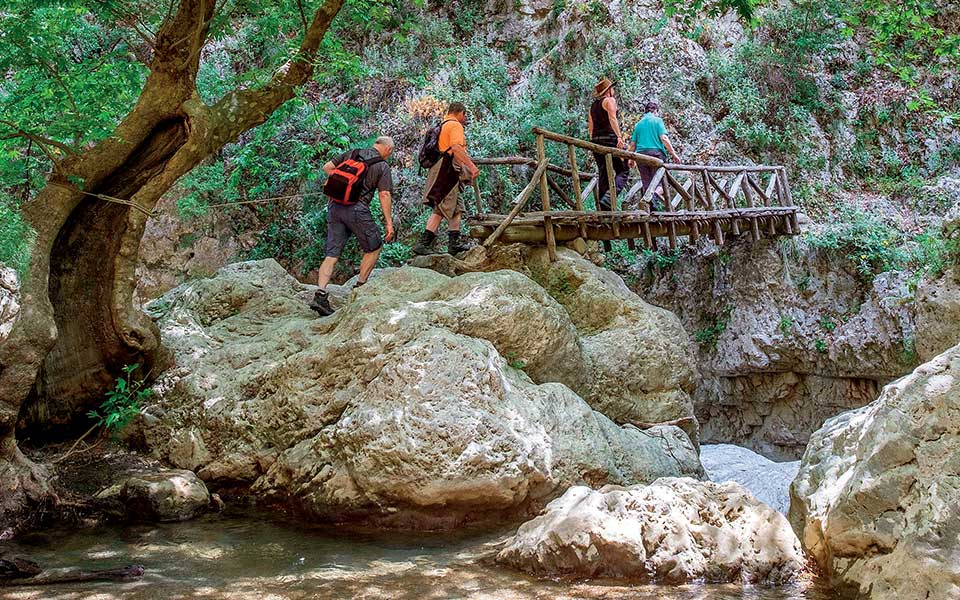
© Visualhellas.gr
Amari Valley
Spiritual surroundings
Southeast of the town of Rethymno, a patchwork of quiet country lanes connects tiny hamlets hardly touched by tourism. Follow the road to Patsos at the valley’s northern end, where mighty Mt Psiloritis, Crete’s highest mountain, looms large to your left.
Below this legendary peak, a journey in the Amari Valley takes you through some of Crete’s oldest olive groves; nestled among them are places of ancient spirituality. This is a timeless, sacred place. Tiny Byzantine chapels with colorful frescoes sit beside the remains of Minoan sites that predate Christianity by more than 2,000 years.
The village of Nefs Amari is a lovely spot, with its church bell tower and the oldest known church in Crete (Aghia Anna, 1196). Meronas, and its 14th-century Church of the Panaghia, should be on any tour of the valley, along with Gerakari, famed for its sweet dark cherries.
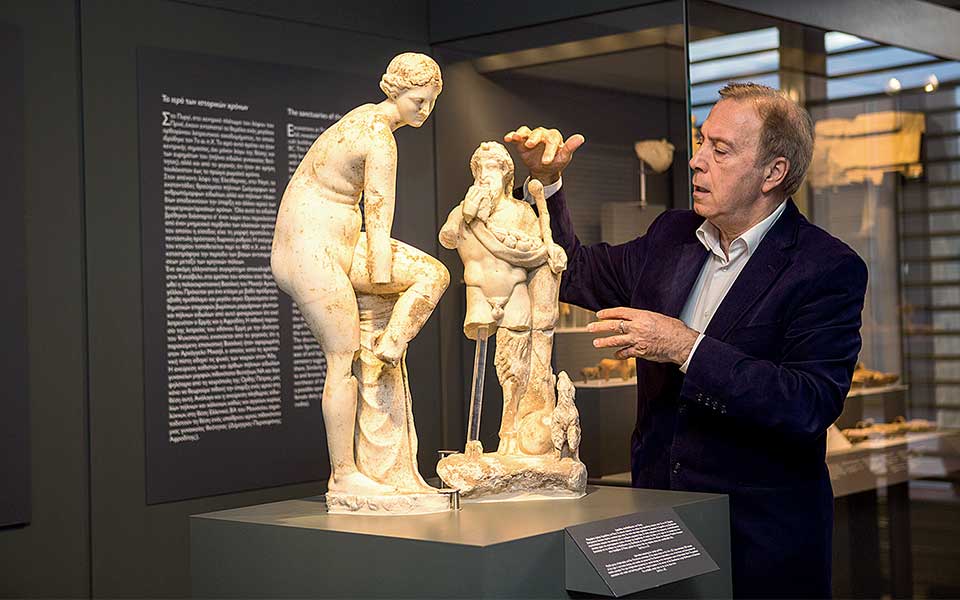
© Effie Paroutsa
ancient EleUtherna
Across eras
This impressive archaeological park sprawls down a picturesque ridge with well-organized, sign-posted paths and an official EU hiking trail. Archaeological discoveries made here confirm Homer’s descriptions of funeral rites, Patroclus’ pyre and Achilles’ ornate shield as accurate reflections of pre-Classical Greek culture.
Eleutherna flourished from the Geometric through to the Archaic periods (9th-6th c. BC). It was also prosperous in the Hellenistic (323-68 BC) period and survived into Roman, Byzantine and Venetian times. Main attractions here include the Orthi Petra necropolis; public buildings; private houses; a 2,200-year-old stone bridge; and a traditional water mill. Along the way, you’ll find temples, tombs, fountains, reservoirs, quarries, Byzantine chapels and a defensive tower. The site’s museum opened just three years ago. – John Leonard
Check out:
EleUtherna: This important ancient city was inhabited from roughly 3000 BC to the 14th century AD.
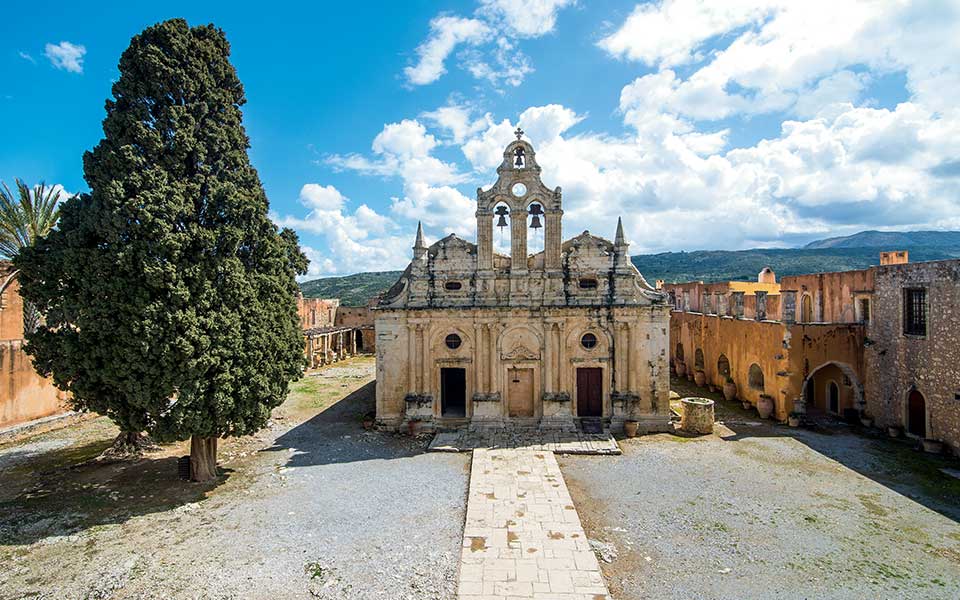
© AFP/Visualhellas.gr
Arkadi Monastery
Symbol of freedom
A place of pilgrimage, it was here during the 1866 Cretan revolt against Ottoman rule that more than 900 people – the majority women and children – sought refuge. After a three-day battle, surrounded by Turkish forces and on the order of the abbot, the Cretans ignited their store of gunpowder, in one last desperate act of defiance. They killed themselves, and many of their attackers, rather than surrender.
While their self-sacrifice did not win the battle, it brought worldwide attention to the cause of Cretan independence, and eventually helped lead to Crete’s unification with Greece. The monastery’s most renowned building is its 16th-century Venetian church, the facade of which survived the events of 1866. Spending time inside its ornate interior, surrounded by icons, is a moving experience.
Info
Open daily: 9:00-20:00.
Tel. (+30) 28310.831.35
Admission €3.
Visitors are invited to cover their legs and shoulders as a mark of respect.
Chromonastiri
Venetian Charm
This village is a tranquil haven. Head to the tiny square to find Prinari’s Mill, a small museum dedicated to olive oil production.
Housed in an exquisite 17th-century villa (a fine example of Venetian rural architecture that in itself is worth a visit), the Military Museum of Chromonastiri (Tel. (+30) 28310.751.35, admission €3) has a fascinating collection of objects and photographs related to the Battle of Crete and to Greece’s War of Independence.
On the way to Chromonastiri lies the beautiful Mili Gorge, once the site of dozens of watermills. Hiking the gorge involves an easy and enchanting 4km walk, with the Mili Gorge Taverna (Tel. (+30) 697.770.1007) a perfect stop for refueling along the way.
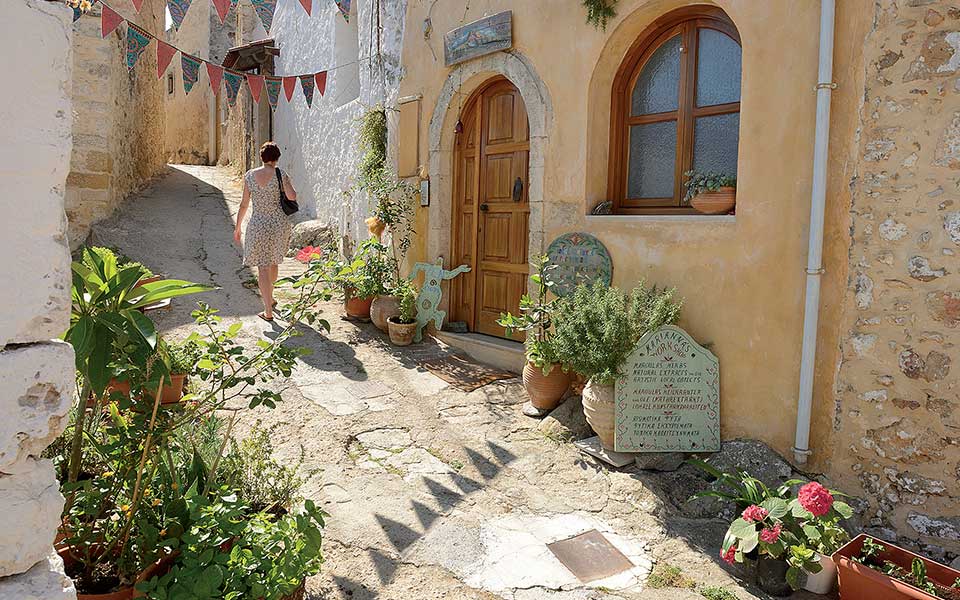
© Christian Heeb/Laif
Maroulas
A village with a view
A 10-minute drive southeast from the city of Rethymno brings you to this charming hamlet with amazing views of the north coast.
Katerina’s Taverna (Tel. (+30) 697.091.6374) and Taverna Fantastiko (Tel. (+30) 698.844.2728) may have the best views, but for insights into Maroulas’ history from owner Ilias, as well as excellent traditional food, try Mylopetra (Tel. (+30) 693.765.1186) below the imposing Venetian tower.
At Marianna’s Workshop (Tel. (+30) 28310.724.32), Marianna Founti-Vassi has been studying and collecting local medicinal herbs for decades, using them to make her teas, balms, infusions and ointments.
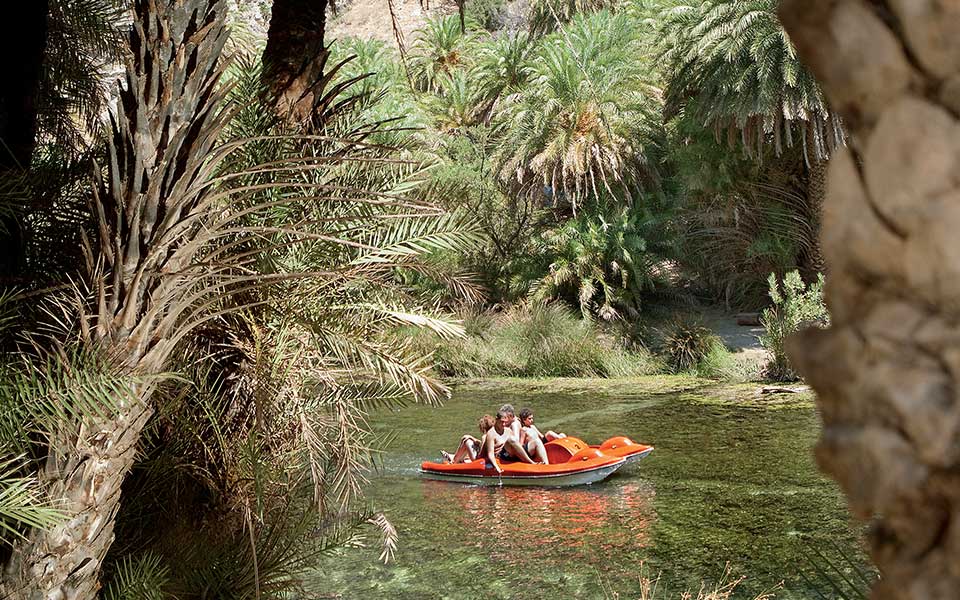
© Tobias Gerber/Laif
Preveli
Tropical scenery
Natural beauty and inspiring history come together at Preveli, with its ancient monastery perched high above the Libyan Sea. Below is a palm tree-lined beach with sun loungers and a couple of cafés. Exploring the gorge, with yet more palms, is fun and a dip in the river is refreshing.
Dating from the Middle Ages and active in rebellions against the Ottomans in the 19th century, Preveli Monastery is better known today for its WWII exploits. Here, hundreds of Allied soldiers who had evaded capture after the fall of Crete in June 1941 were spirited away to Egypt by submarine from the shore below. The soldiers’ escape was made possible by the monks and local people who risked their lives for them.
Info
Preveli Monastery (Tel. (+30) 28320.312.46) is open 9:00-13:30 & 15:30-18:30.
Admission: €2.50. It is a working monastery and visitors are asked to keep this in mind and dress modestly.
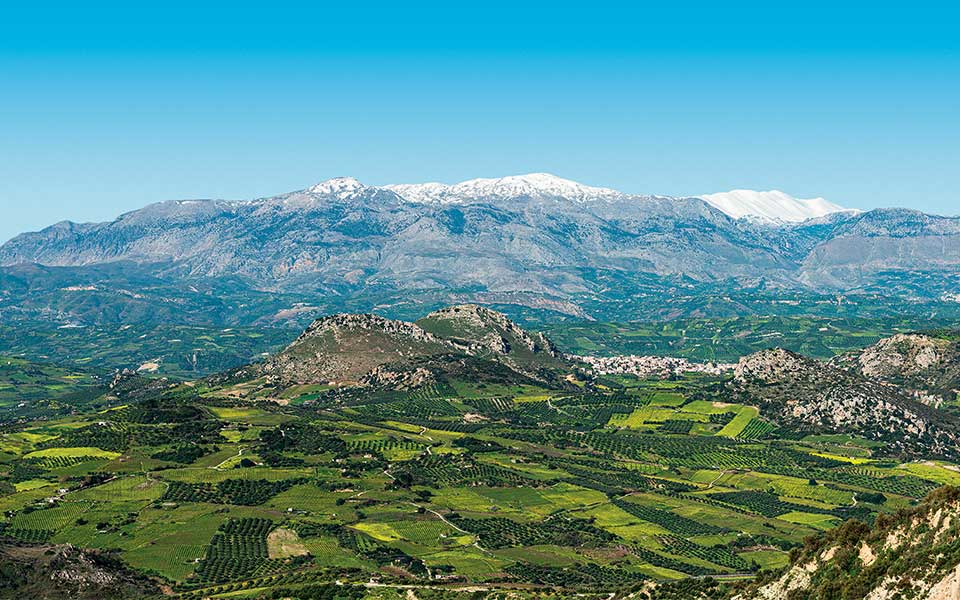
Mount Psiloritis
Mighty, majestic and mysterious
Crete’s highest mountain, Psiloritis dominates the eastern edge of the regional unit of Rethymno. In ancient times, people climbed up to leave offerings at the sanctuary on the peak; today, the Chapel of Timios Stavros (“Holy Cross”) stands here. The view from the peak is breathtaking, particularly in winter, when the mountain is covered in snow.
The 2456m summit can be reached from either the south or the north. The shortest and easiest route to the top, called “Strata of Psiloritis,” takes two hours and begins at Lakos Mygerou (1580m). Recently created, this trail is well-marked and is paved with stone slabs for easy footing. Another well-known route to the summit follows the E4 path from the Nida Plateau.
Check out:
Nida Plateau: In the mitata, the stone shelters built by shepherds, goats are milked daily to help make Crete’s famous cheeses.

© Dimitris Vlaikos

© Dimitris Vlaikos
Anogia
Music and resistance
More than 700m above sea level on Mt Psiloritis, this village has a poignant history. Destroyed by the Turks for its resistance to their rule in the 19th century, and by the Germans in World War II, Anogia is synonymous with heroism and sacrifice. This is a place where memory runs deep. Perhaps that is why it’s at the heart of the history of Cretan music.
Anogia-born Nikos Xylouris (1936-1980), one of Crete’s most famous lyra players, elevated a local folk music tradition to national and international prominence. His birthplace, the Nikos Xylouris House, is now a small museum, with posters, photographs and memorabilia.
Don’t miss the Museum of Grylios showcasing the moving work of Alkiviades Skoulas (1902-1996) – who, in his old age, became a painter and woodcarver. In the lower town, the village’s rich handicraft tradition is obvious in the embroidery for sale in the stalls off Livadi Square.
Tip
Aetos (Tel. (+30) 28340.312.62) is famous for a Cretan favorite antikristo, finger-lickingly delicious slow-roasted crispy lamb. Skalomata (Tel. (+30) 28340.313.16) serves great rustic favorites.

© Dimitris Vlaikos
GOOD FOOD GUIDE
GOULES, GOULEDIANA
Owner/chef Kostas Chamogiorgakis has created a truly remarkable restaurant at Goules. Kostas’ inspired take on traditional Cretan cuisine draws diners from around the world. Rooster braised in wine with homemade pasta, and pork with honey and thyme, are just two of the delights on offer. Tel. (+30) 698.366.1503
MOSCHOVOLIES, MERONAS
This traditional taverna run by the Moschonas family uses the freshest local produce from their own farm to create specialties that include eggplant with feta and tomatoes, and slow-cooked pork with mountain herbs. Tel. (+30) 28330.225.26
ARKOUDENAS GARDEN, EPISKOPI
Popular and busy, Arkoudenas Garden is a delight. Owner Giorgos and his mom Angeliki use ingredients from their farm. Giorgos’ own crunchy and delicious 49-ingredient salad (a Cretan diet all to itself), and the succulent lamb with rice cooked in the juices of the meat (often served at Cretan weddings) are hard to beat. Tel. (+30) 28310.616.07
ILIOMANOLIS, KANEVOS
This taverna (and its cook Maria Iliaki) have put the village of Kanevos on the tourist map. They serve more than 25 different stews made in the tsikali (the local word for pot) every day, using seasonal ingredients and generous lashings of olive oil. Ask for the lamb with askordoulaki (tassel hyacinth bulbs), which is absolutely unforgettable. Tel. (+30) 28320.510.53
STROFI TIS GEFSIS, VYZARI
This taverna, around for 37 years, serves solid classics like sizzling goat; fried or roast rabbit with potatoes, greens or rice; braised rooster; and lamb. Manolis, a priest, and his wife Eleni cook up locally sourced meat with whatever grows in their garden: home cooking at its purest. Tel. (+30) 28330.412.58
AVGENAKIS’ KAFENEIO, SPILI
You’ll find traditional kafeneia (coffee houses) in villages across Crete. The look is always the same: a bar in the corner, a stove in the middle, and all the chairs facing the door – to let patrons check out who’s coming in. You’ll see photographs of Eleftherios Venizelos or the owner’s family. In the past, such places often doubled as barbershops, post offices, general stores, or even a tailors’, as in the case of the kafeneio of Giorgis Avgenakis. It no longer makes Cretan costumes, but the ofti (baked) potatoes are delicious. Tel. (+30) 28320.220.29
Check out:
Spili: In this pretty village, you’ll find a Venetian fountain with 19 lion heads spouting crisp clean water from Mt Psiloritis.
Mt Psiloritis: Crete’s tallest mountain (2456m) remains snow-capped until late spring; it’s perfect for hikes, mountain climbing, and even skiing!
Preveli and Vai: This is where you’ll find the largest groves of the rare native Cretan palm tree Phoenix theophrastii.
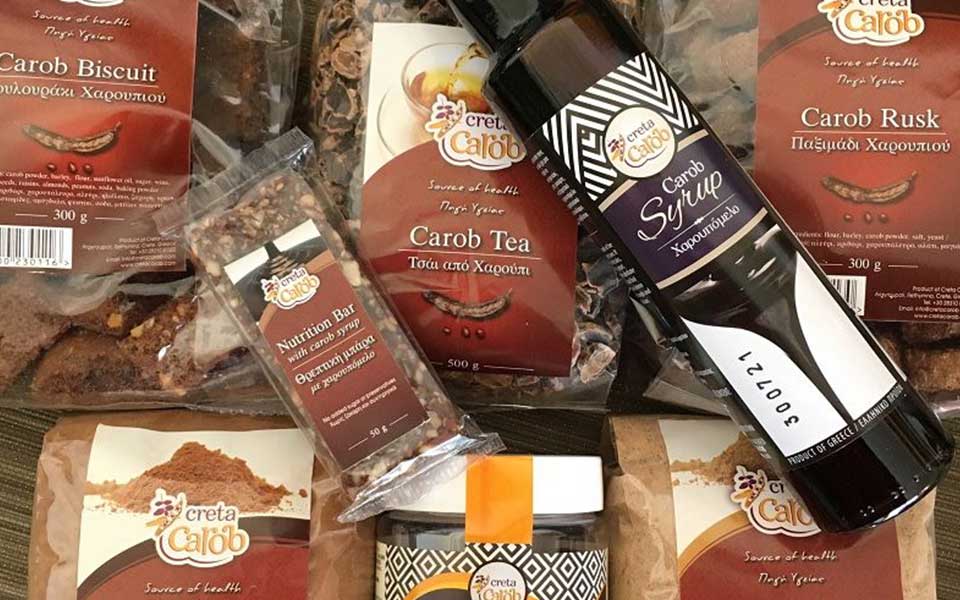
CRETA CAROB
Full of flavor
While Crete is full of carob trees, carob pods were traditionally used as animal feed, although a few old-timers still remember eating them during the food shortages in World War II. Today, the Creta Carob company at Argyroupoli produces dozens of products with a flavor strongly resembling raw cocoa. Different parts of the pod are used to produce syrups, bars, spreads, cookies, jams, pastas, different types of flour and even soaps.
Info
Tel. (+30) 28310.811.50, open daily 8:00-16:00.

© Dimitris Vlaikos
KLADOS WINERY
Great grapes
Off the beaten track near the village of Panormos, the Klados Winery, one of the region of Rethymno’s few commercial wine producers, cultivates the indigenous Vidiano grape to produce wine with lemony green hues and aromas of peach and apricot, refreshingly dry and a perfect match for seafood. Look for it (the bottles carry the winery’s distinctive hawk logo) in local tavernas and supermarkets.
Info
Admission €3-€5 (depending on the number of wines tasted) and includes a tour and presentation.
Open Mon-Fri 10:00-18:00, Sat 10:00-15:00.

